Although it was a crucial part of humans’ survival many thousands of years ago, hunting is now nothing more than a violent form of recreation that the vast majority of hunters do not need for subsistence.
Hunting has contributed to the extinction of massive numbers of animal species and sub-species all over the world, such as three of the nine sub-species of tiger, so that now it is estimated that apart from those in captivity due to tiger farming by the Chinese and Vietnamese, there are now only around 3,000 tigers of all six remaining sub-species left in the wild.
For example, in recent times, there were five rhino species represented by 13 subspecies. Three of the subspecies are now extinct, two others (Ceratotherium simum cottoni and Dicerorhinus sumatrensis harrisoni) are perilously close to extinction, and one (Dicerorhinus sumatrensis lasiotis) may already be extinct, despite unconfirmed reports of its continued existence.
Recent figures for rhino species and subspecies are:
1. Northern white rhinoceros [Ceratotherium s. cottoni]
Southern white rhinoceros [Ceratotherium s. simum] 20,405
http://www.rhinos.org/species/white-rhino/
2. Southwestern black rhinoceros [Diceros bicornis] 1,900
Western black rhinoceros [Diceros b. bicornis longipes] 0
Southern black rhinoceros [Diceros b. bicornis minor] 2,200
Eastern black rhinoceros [Diceros bicornis michaeli] 750
http://www.rhinos.org/species/black-rhino/
3. Indian rhinoceros [Rhinoceros unicornis] (in 2007) 2,575
aka Greater one-horned rhinoceros
http://www.rhinos.org/species/greater-one-horned-rhino/
4. Javan rhinoceros
Rhinoceros sondaicus sondaicus 60
Rhinoceros sondaicus annamiticus 0
Rhinoceros sondaicus inermis 0
http://www.rhinos.org/species/javan-rhino/
5. Sumatran rhinoceros
Dicerorhinus sumatrensis lasiotis 0 (unconfirmed)
Dicerorhinus sumatrensis harrisoni 30
Dicerorhinus sumatrensis sumnatrensis 220
http://www.rhinos.org/species/sumatran-rhino/
Despite these low numbers rhino 1004 were poached last year and 172 up to mid March 2014. Poaching though is not the only reason numbers have dwindled to such a critically low number, as in recent years many rhino have also been legally hunted and killed.
In a practice called trophy hunting, it is still possible to legally hunt lions, leopards and other big cats, elephants, rhino, giraffes, hippos, and any number of deer and antelope by buying a permit at a Safari Club International auction, for example, or online from various hunting organisations. It is also possible to kill rare animals. The rarer the animal the higher the price ‘hunters’ will pay for the permit to kill one.
There are various different types of trophy hunters. There are those who just kill wildlife such as cats, bears, wolves, deer, raccoons, duck, whatever. Some of them are competitive about how many they kill and the size of the antlers, etc. others just go hunting as a hobby at weekends and typically go on hunting holidays.
Then there is a large comparatively sophisticated group of wealthy trophy hunters who travel to compete for various awards by killing certain numbers of animals of particular species in different countries and on all five continents.
There are many different types of awards which are organised by the Safari Club International (SCI). The SCI is an international organization with more than 50,000 members and 180 local chapters. The SCI is dedicated to protecting the freedom to hunt and – they say “promoting wildlife conservation”.
Less than 5 percent of the US population – about 13.7 million people – hunt. Yet hunting is permitted in many wildlife refuges, national forests, and state parks and on other public lands. Almost 40 percent of hunters slaughter and maim millions of animals on public land every year, and by some estimates, poachers kill just as many animals illegally.
Pain and Suffering
Many animals endure prolonged, painful deaths when they are injured but not killed by hunters. A study of 80 radio-collared white-tailed deer found that of the 22 deer who had been shot with “traditional archery equipment,” 11 were wounded but not recovered by hunters. Twenty percent of foxes who have been wounded by hunters are shot again. Just 10 percent manage to escape, but “starvation is a likely fate” for them, according to one veterinarian. A South Dakota Department of Game, Fish and Parks biologist estimates that more than 3 million wounded ducks go “unretrieved” every year.
A British study of deer hunting found that 11 percent of deer who’d been killed by hunters died only after being shot two or more times and that some wounded deer suffered for more than 15 minutes before dying. Other studies in the US have also shown that half or more of the deer who are shot are not killed, and can live for days, weeks or months afterwards, and so die long and painful deaths.
Hunting disrupts migration and hibernation patterns and destroys families. For animals such as wolves, who mate for life and live in close-knit family units, hunting can devastate entire communities. The stress that hunted animals suffer—caused by fear and the inescapable loud noises and other commotion that hunters create—also severely compromises their normal eating habits, making it hard for them to store the fat and energy that they need in order to survive the winter.
Nature Takes Care of Its Own
The delicate balance of ecosystems ensures their survival —if they are left unaltered. Natural predators help maintain this balance by killing only the sickest and weakest individuals. Hunters, however, kill any animal whose head they would like to hang over the fireplace—including large, healthy animals who are needed to keep the population strong. Elephant poaching is believed to have increased the number of tuskless animals in Africa, and in Canada, hunting has caused bighorn sheep’s horn size to fall by 25 percent in the last 40 years. Nature magazine reports that “the effect on the populations’ genetics is probably deeper”.
Even when unusual natural occurrences cause overpopulation, natural processes work to stabilize the group. Starvation and disease can be tragic, but they are nature’s ways of ensuring that healthy, strong animals survive and maintain the strength of the rest of their herd or group. Shooting an animal because he or she might starve or get sick is arbitrary and destructive.
Another problem with hunting involves the introduction of exotic “game” animals who, if they’re able to escape and thrive, pose a threat to native wildlife and established ecosystems.
Canned Cruelty
Most hunting occurs on private land, where laws that protect wildlife are often inapplicable or difficult to enforce. On private lands that are set up as for-profit hunting reserves or game ranches, hunters can pay to kill native and exotic species in “canned hunts.” These animals may be native to the area, raised elsewhere and brought in, or purchased from individuals who are trafficking in unwanted or surplus animals from zoos and circuses. The animals are hunted and killed for the sole purpose of providing hunters with a “trophy.”
Canned hunts are big business—there are an estimated 1,000 game preserves in the U.S., with some 5,000 so-called “exotic ranchers” in North America. Ted Turner, the country’s largest private landowner, allows hunters to pay thousands of dollars to kill bison, deer, African antelopes, and turkeys on his 2 million acres.
Animals on canned-hunting ranches are often accustomed to humans and are usually unable to escape from the enclosures that they are confined to, which range in size from just a few yards to thousands of acres. Most of these ranches operate on a “no-kill, no-pay” policy, so it is in owners’ best interests to ensure that clients get what they came for. Owners do this by offering guides who are familiar with animals’ locations and habits, permitting the use of dogs, and supplying “feeding stations” that lure unsuspecting animals to food while hunters lie in wait.
While many states have limited or banned canned hunts, there are no federal laws regulating this cruel practice at this time.
Other Victims
Hunting accidents destroy property and injure or kill horses, cows, dogs, cats, hikers, and other hunters. In 2006, then–Vice President Dick Cheney famously shot a friend while hunting quail on a canned hunting preserve. According to the National Shooting Sports Foundation, thousands of injuries are attributed to hunting in the U.S. every year—and that number only includes incidents involving humans.
The bears, cougars, caracals, and bob cats, deer, foxes, and other animals who are chased, trapped, and even killed by dogs during – sometimes illegal – hunts aren’t the only ones to suffer from this variant of the “sport.” Dogs used for hunting are often kept chained or penned and are denied routine veterinary care such as vaccines and heartworm medication. Some are lost during hunts and never found, whereas others are turned loose at the end of hunting season to fend for themselves and die of starvation or get struck by vehicles.
The widespread cruel practice of canned hunting of lions
There are few wild lions left in Africa, and just about all hunting of lions is of specially bred lions in a practice called “canned hunting”. This is often ressed up to look more authentic, with so-called ‘hunts’ being staged by companies who will, for example, pretend to ‘search’ for the lion when they know where it will be as it was put there just a few days ago in a large enclosure, alone for the first time in its short life. Sometimes the animals are drugged beforehand. The ‘hunters’ are often bad shots, and take several shots to kill the animals which can suffer quite badly in the process. There are videos on Youtube which clearly show this to be the case and are quite difficult to watch.

The hunting of the bred lions is not the only reason for complete rejection of this industry as being unethical from the point of view of animal protection. The road to suffering for the lions on the South African breeding farms begins shortly after their birth.
Separated from the mother too soon
Often the lion cubs are separated from their mothers only three days after their birth. This practice has often fatal consequences, not including the mental suffering that these animals suffer: Due to the lack of milk provided by the mother, multiple deficiencies are displayed in the young animals. The cubs frequently suffer from bone deformations, breathing and digestive problems, thyroid problems, calcium deficiencies, tuberculosis and many other illnesses, the results of which have a significant effect on the animals when they grow up.
The keeping conditions for the young animals are also often completely unacceptable: Water, food and shade are hard to come by in many of the cages. In the some cases, female cubs are shot shortly after their birth as they are rarely in demand for hunting.
Patting is stress
Even when they are only babies, the little lion cubs are abused as tourist attractions. They are raised by hand, so tourists can be charged to pet them or when they get older, walk with them. Everywhere in South Africa you can find the offers to pat a lion cub, take your photo with a lion cub or to go for a walk with a half grown lion.
This is pure stress for the motherless lion cubs: young animals have a great need for calm and so the constant contact to people and the bad keeping conditions lead to massive behavioural disturbances. Even their physical development is strongly affected. In addition, more and more people are being attacked and injured by young lions.
Lionesses as breeding machines
The breeding lionesses are in heat again very shortly after their young cubs are taken away from them and are then instantly mated again. Abused as “breeding machines”, continuously exposed to the traumatic experience of losing their young. Because they are giving birth much more often than they would be doing under natural conditions, after only a few years they become drained and weak. The cubs that are bred to these lionesses while they are in this condition also have a bad constitutions.
In the wild, lionesses usually give birth once every two years – on the breeding farms they have to give birth every six months. It is not rare for drained or small lionesses to end up being “special offers” for hunters.
Misinformation for tourists …
The lion breeders falsely describe themselves as “nature protectionists” and claim to tourists that the animals are being bred to be later released into the wild. This is obvious misinformation. Predators that are born in captivity, especially when they have been raised by hand, cannot be successfully released into the wild.
… and volunteers
Voluntary workers from Europe are often attracted to the breeding farms as volunteers, to work together with the farms to breed lions. It’s not rare for these volunteers to pay a lot of money for a six week stay in a so-called “rescue station” or a “game reserve”.
However these offers have nothing to do with the protection of species or animals. The young lions suffer on these farms. Anyone doing volunteer work or gaining work experience here is supporting the horrific lion industry – even if they don’t intend to or realize that they are doing so.
As a general rule, the sad end destination of a South African breeding lion is a Canned Hunting farm.
Please read this short but well-written article to see how badly lions suffer in this process, as the mothers cry for their cubs who are in turn crying for them, for many months, usually within hearing distance of each other.
Sanwild Lion Rescue on the Exploitation of Lions




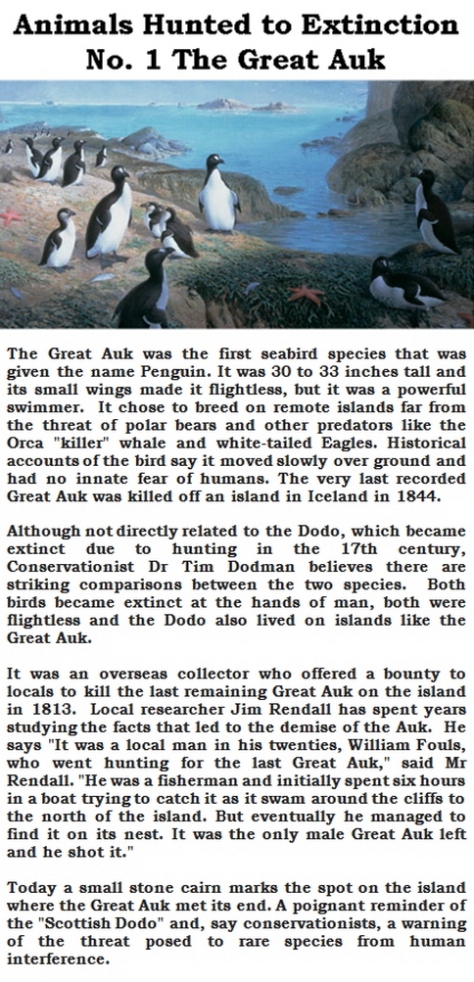
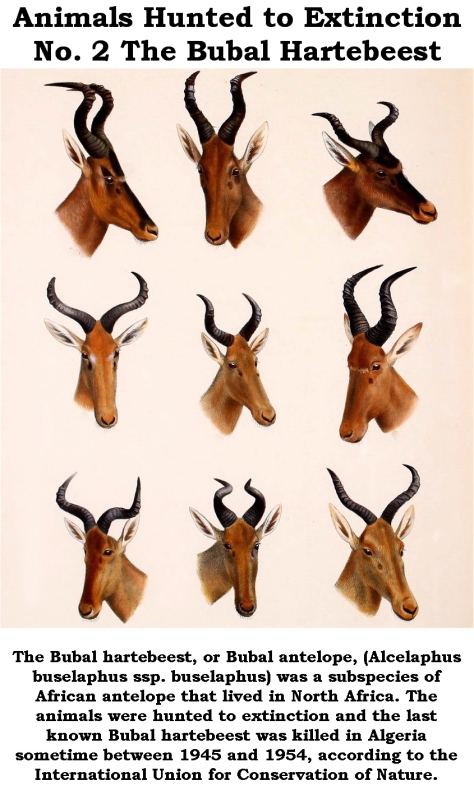

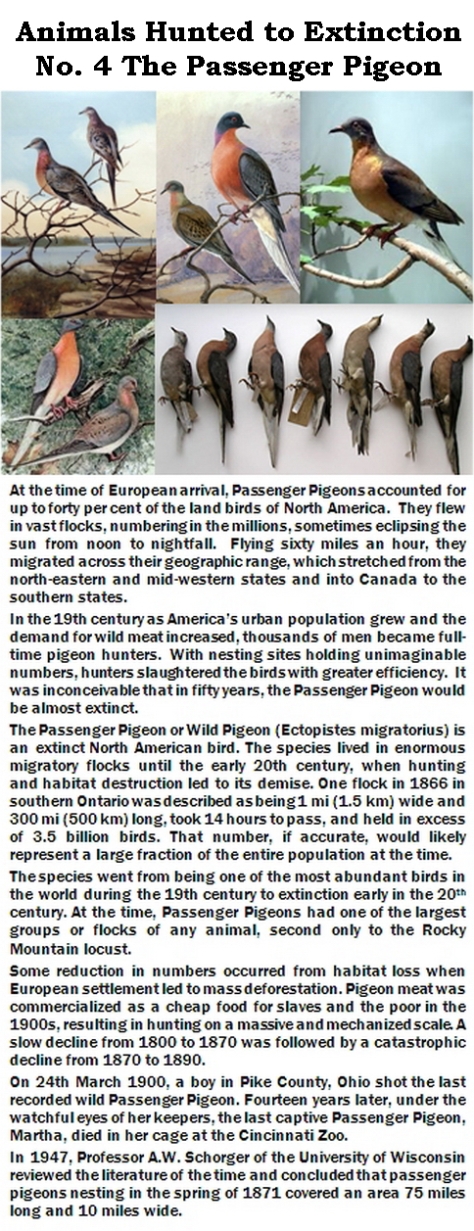

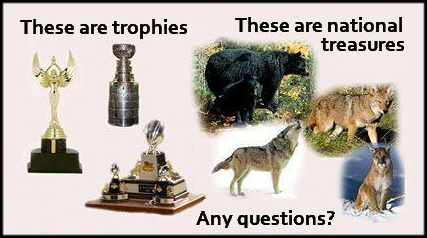
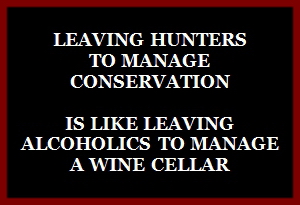
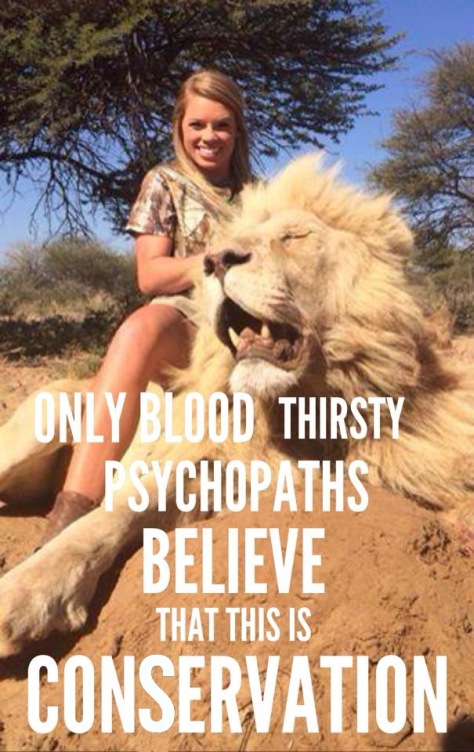



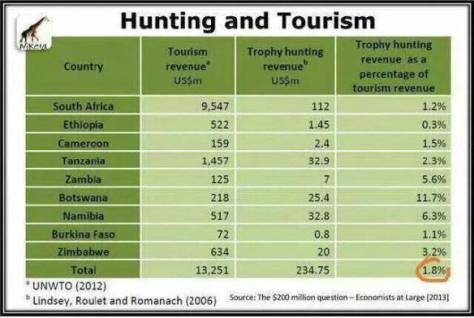

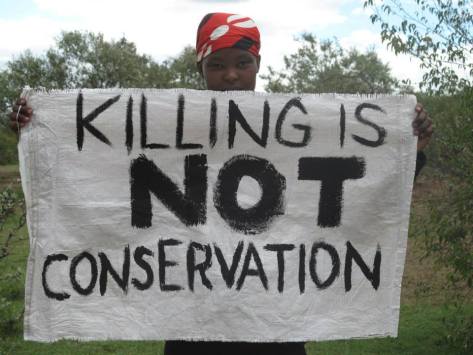


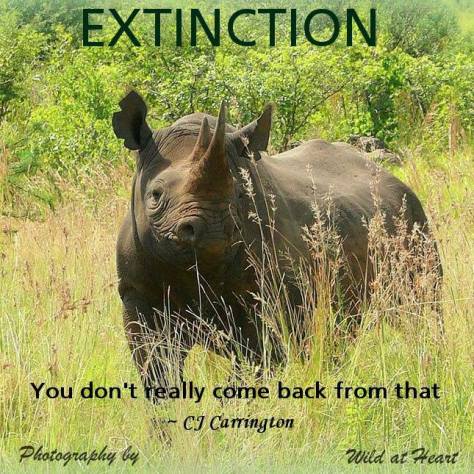
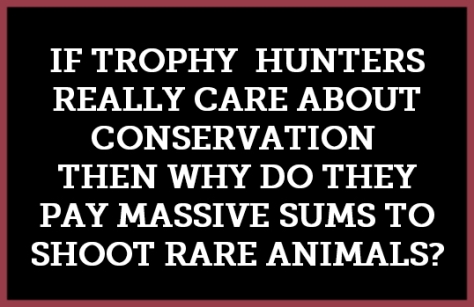
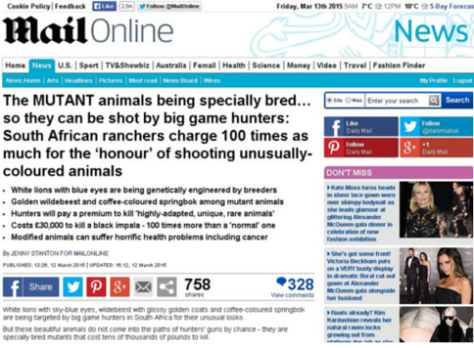







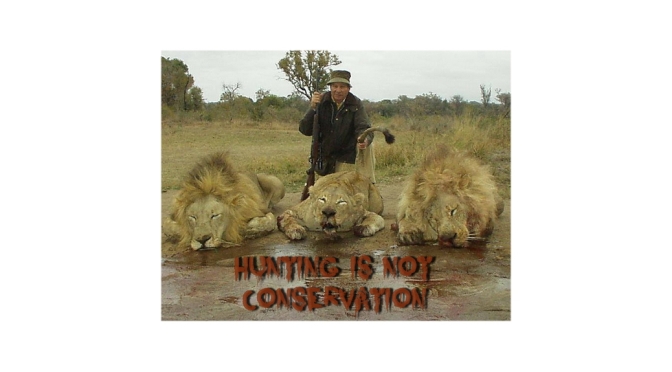
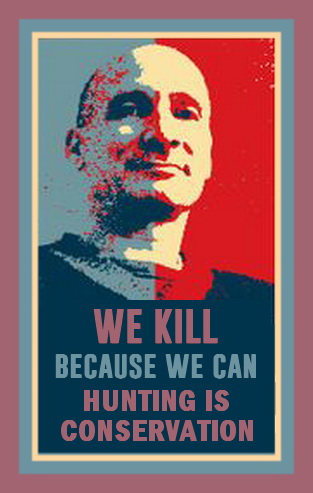
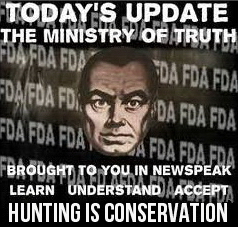




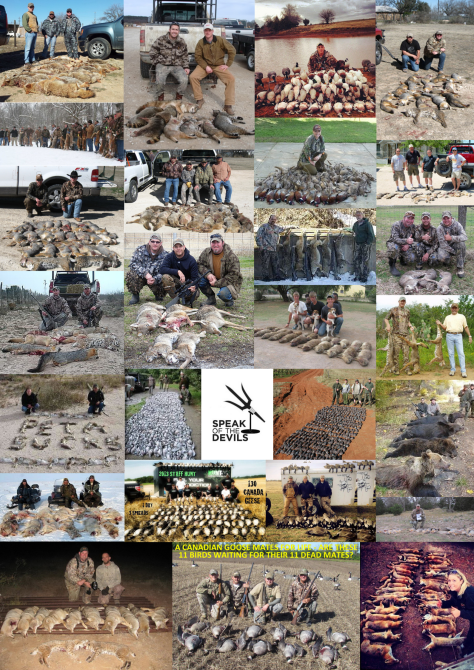


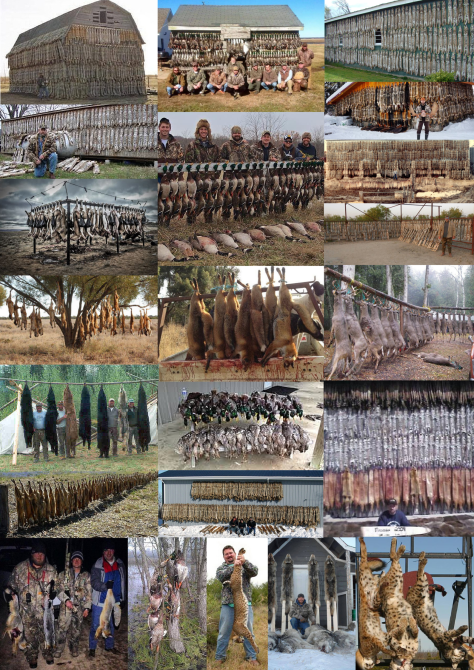

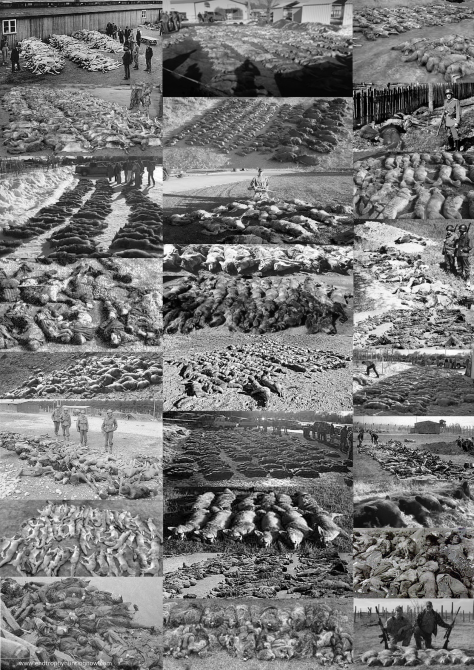
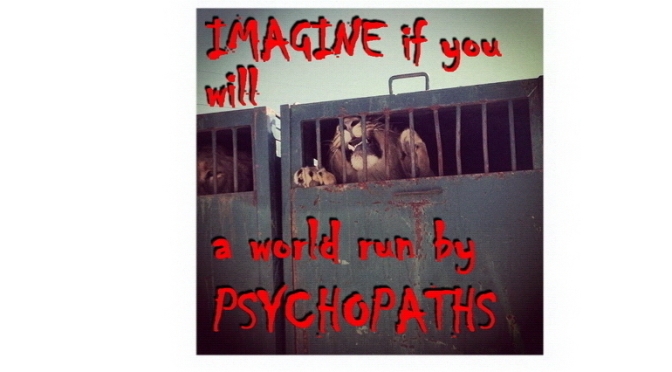



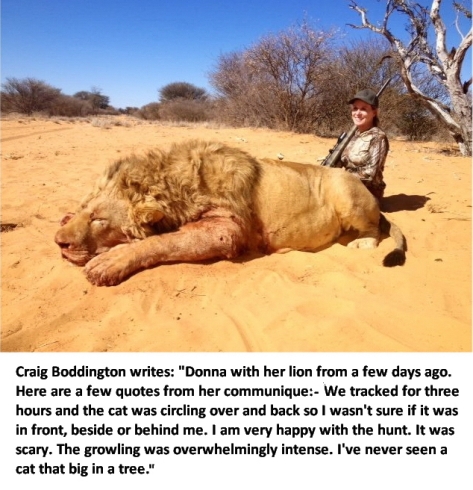








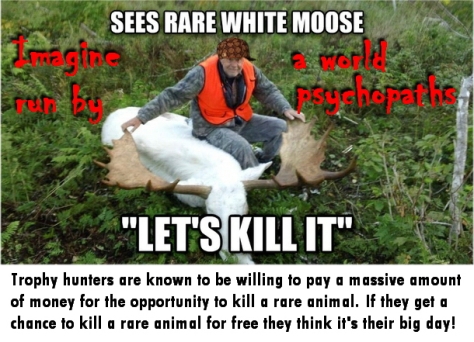


 On Christmas Eve last year 2013 Louisiana hunter Bobby Neames shot a big 6-point buck before even climbing his stand. But 15 minutes later the buck charged, and Neames found himself fighting for his life. The 46-year-old hunter set out the morning before Christmas in East Feliciana Parish, La., reports the Louisana Sportsman. Neames was expecting company for lunch and still had cooking to do, but the rut peaked on Christmas and he could not resist a quick hunt.
On Christmas Eve last year 2013 Louisiana hunter Bobby Neames shot a big 6-point buck before even climbing his stand. But 15 minutes later the buck charged, and Neames found himself fighting for his life. The 46-year-old hunter set out the morning before Christmas in East Feliciana Parish, La., reports the Louisana Sportsman. Neames was expecting company for lunch and still had cooking to do, but the rut peaked on Christmas and he could not resist a quick hunt.
 The buck crashed. Its antlers caught on the ground for a few seconds, giving Neames a chance to scramble away. He made it just 8 feet, but it was far enough.
The buck crashed. Its antlers caught on the ground for a few seconds, giving Neames a chance to scramble away. He made it just 8 feet, but it was far enough.